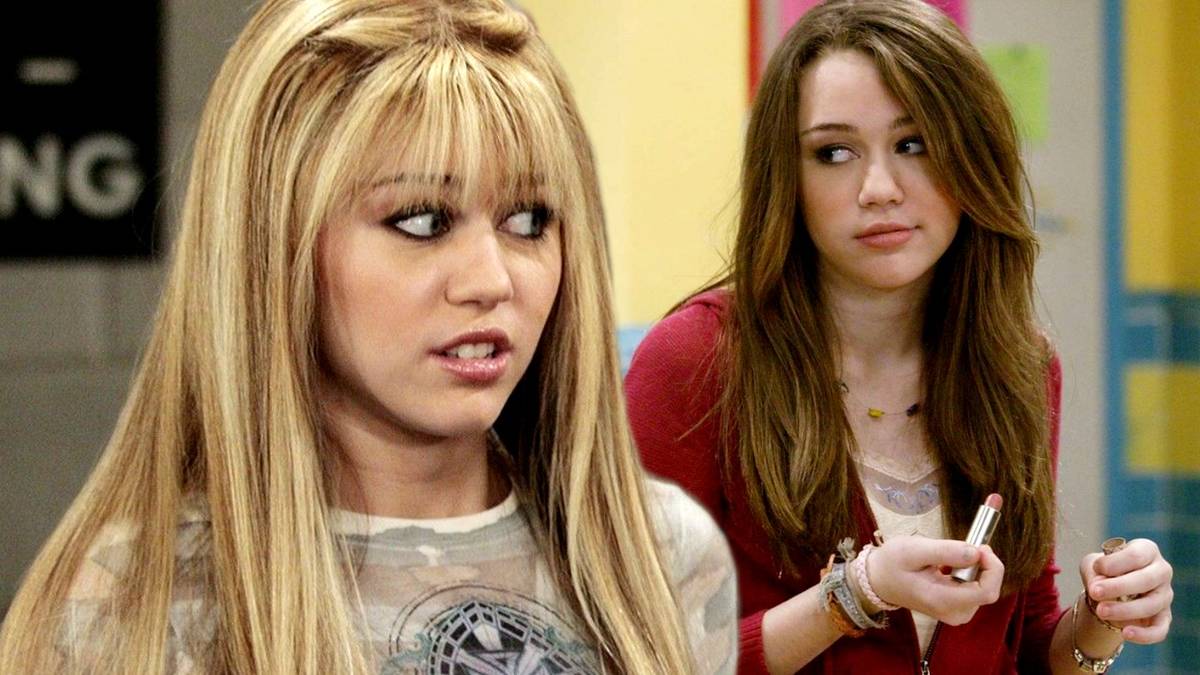
Miley Cyrus. The name itself conjures images of dynamic evolution, fearless reinvention, and an unapologetic embrace of self. From her earliest days as a smiling child born Destiny Hope, to becoming a global pop phenomenon, Miley has consistently captivated audiences with her raw talent and remarkable ability to shape-shift, both musically and personally. It’s a journey filled with incredible highs, significant milestones, and moments of profound artistic courage that have solidified her status as one of the 21st century’s most influential figures.
Her story isn’t just one of stardom; it’s a vibrant tapestry woven with threads of deep family connections, a fierce drive to perform, and an unwavering commitment to her own truth. We’ve watched her grow up in the spotlight, navigating the complexities of fame with a unique blend of vulnerability and audacious strength. This article invites you to take a closer look at the pivotal moments and transformations that have defined Miley Cyrus’s extraordinary path, offering a front-row seat to the evolution of a true pop culture powerhouse.
:max_bytes(150000):strip_icc():focal(749x0:751x2)/miley-cyrus-64-061925-a71ce442673942bf8a942c537f50a0d0.jpg)
1. **Early Life and Dream to Perform**Destiny Hope Cyrus entered the world on November 23, 1992, in Franklin, Tennessee, born to Leticia “Tish” Jean Cyrus and country singer Billy Ray Cyrus. Her unique birth name, Destiny Hope, was chosen by her parents to reflect their belief that she was destined for great things. They affectionately nicknamed her “Smiley” due to her frequent smiles as an infant, a moniker that would later be shortened to “Miley,” eventually becoming her legal first name in 2008. This name change also incorporated “Ray,” honoring her Democratic politician grandfather, Ronald Ray Cyrus.
Family life was certainly lively for young Miley. She was born with supraventricular tachycardia, a condition causing an abnormal resting heart rate, yet this never seemed to slow her down. Her godmother is none other than the legendary singer-songwriter Dolly Parton, a connection that speaks volumes about the musical heritage surrounding her. Interestingly, her parents secretly married in December 1993, a year after her birth, against the advice of her father’s record company, further highlighting the independent spirit that would come to define Miley.
The Cyrus household on a sprawling 500-acre farm outside Nashville was a hub of creativity. Miley’s maternal siblings, Brandi, Trace, and Noah, are all established entertainers, with Trace being a vocalist for Metro Station and Noah an actress, model, and singer. Her own acting aspirations ignited at just eight years old. After her father, Billy Ray, took her to see a production of *Mamma Mia!* in Toronto, she declared, “This is what I want to do, daddy. I want to be an actress.” This pivotal moment set her on a path of singing and acting lessons, leading to her first acting role as Kylie in her father’s TV series *Doc* and a credit as “Young Ruthie” in Tim Burton’s *Big Fish* in 2003.

2. **Hannah Montana: The Teen Idol Phenomenon**The role that would launch Miley Cyrus into superstardom, transforming her into a teen idol for a generation, was Miley Stewart in the Disney Channel television series *Hannah Montana*. At just thirteen, Cyrus initially auditioned for the role of Miley Stewart’s best friend, but her comedic performance caught the attention of casting directors, leading to an audition for the lead. Despite initial concerns that she was “too small and too young,” her singing and “goofy acting abilities” ultimately secured her the iconic part.
When *Hannah Montana* premiered in March 2006, it immediately captivated audiences, becoming the largest for a Disney Channel program and quickly ranking among the highest-rated series on basic cable. The show’s immense success led to a profitable franchise, with Cyrus becoming the first act within the Walt Disney Company to have deals spanning television, film, consumer products, and music. This era saw her release two number-one soundtracks on the Billboard charts, solidifying her musical presence alongside her acting fame.
The demand for Hannah Montana was unprecedented, leading to the highly successful Best of Both Worlds Tour (2007–08) to promote the *Hannah Montana 2: Meet Miley Cyrus* album. Ticketmaster officials even remarked that there hadn’t been “a demand of this level or intensity since The Beatles or Elvis.” The tour’s popularity further propelled her career, culminating in a successful 3D concert film. This period firmly cemented Miley Cyrus as a global teen idol, skillfully balancing her fictional pop star persona with her burgeoning real-life musical ambitions.

3. **Transition to Solo Pop Star: Meet Miley Cyrus & Breakout**While still embodying the beloved Hannah Montana, Miley Cyrus began to forge her own identity as a solo artist. Her transition was carefully orchestrated, starting with the second disc of the *Hannah Montana 2: Meet Miley Cyrus* album in June 2007, which was credited as her debut studio album. This innovative release allowed her to introduce her standalone music to a massive audience already familiar with her voice, and it became her second album to top the Billboard 200, selling over three million copies. The lead single, “See You Again” (2007), was a commercial hit, selling over two million copies in the US.
Building on this momentum, Cyrus signed a four-album deal with Hollywood Records for her non-Hannah Montana music, a clear signal of her serious intentions as an independent artist. Her collaboration with her father, Billy Ray Cyrus, on the single “Ready, Set, Don’t Go” (2007) also highlighted her country roots and familial ties while broadening her musical appeal. These early solo efforts showed a young artist testing the waters, exploring sounds beyond the pop-rock confines of her Disney persona, and preparing for a bolder leap into the mainstream.
The release of her second studio album, *Breakout* (2008), truly showcased her growing artistic independence. This album achieved the highest first-week sales of her career at the time and became her third to top the Billboard 200. It was a significant achievement, marking her as the youngest artist in history at age 16 to have four number-one albums on the chart when considering her previous Hannah Montana soundtracks. During this time, she also debuted as a film actress in the animated film *Bolt* (2008), co-writing and performing the Golden Globe-nominated song “I Thought I Lost You” with John Travolta, demonstrating her multifaceted talents beyond the Hannah Montana brand.
:max_bytes(150000):strip_icc():focal(749x0:751x2)/miley-cyrus-060625-a145fdae0aad4cf1b3d644b7e67daa76.jpg)
4. **The “Can’t Be Tamed” Era and Image Shift**By 2010, Miley Cyrus was determined to shed her teen idol image and embrace a more mature artistry, a shift profoundly marked by her third studio album, *Can’t Be Tamed*. This era was a deliberate attempt to break free from the squeaky-clean perception of her Disney past, signaling a bold new direction both musically and visually. The album itself leaned into a more dance-oriented sound, a departure from her earlier pop-rock releases, and its lyrical content, along with Cyrus’s increasingly provocative live performances, stirred a considerable amount of controversy.
The decision to push boundaries was evident in everything from the album’s title to its promotional imagery. While *Can’t Be Tamed* sold 106,000 copies in its first week, it was her first studio album not to top the Billboard 200, indicating that this image shift was met with mixed reactions from her established fanbase and the wider public. Nevertheless, it was a crucial step in her evolution, allowing her to assert her artistic independence and express a more adult identity. She concluded her Hannah Montana obligations with a final soundtrack that October, formally closing that chapter of her career.
The “Can’t Be Tamed” period was also defined by a series of widely publicized controversies that solidified her new public persona. A video of her smoking salvia with a bong in December 2010 drew significant media attention, further distancing her from her innocent Disney image. This era, while challenging, was a necessary and foundational phase for Cyrus, allowing her to experiment and lay the groundwork for the even more dramatic transformations that would follow. She later embarked on her worldwide Gypsy Heart Tour in 2011, notably excluding North American dates, citing her controversial moments as the reason, and expressing a desire to perform “where she felt the most love.”
:max_bytes(150000):strip_icc():focal(719x468:721x470)/miley-cyrus-f03107e7608642d2b5744b61d923675e.jpg)
5. **The Bangerz Era: Hip-Hop Influence and Controversies**The years 2013-2015 marked one of Miley Cyrus’s most transformative and controversial periods, epitomized by her fourth studio album, *Bangerz*. Having signed with RCA Records and hired Larry Rudolph, known for managing Britney Spears, Cyrus collaborated with acclaimed producers like Pharrell Williams and Mike Will Made-It. This resulted in a distinct hip-hop-influenced sound that saw her working with numerous hip-hop artists, including appearances on Snoop Lion’s “Ashtrays and Heartbreaks” and will.i.am’s “Fall Down.”
The lead single, “We Can’t Stop,” released on June 3, 2013, was touted as her comeback single and achieved massive global commercial success, topping charts in territories like the United Kingdom. Its music video set a new Vevo record for most views within 24 hours and was the first to reach 100 million views on the site, demonstrating her undeniable appeal and the public’s eagerness to see her next move. However, it was her performance with Robin Thicke at the 2013 MTV Video Music Awards that truly defined this era, drawing widespread media attention and public scrutiny for her simulated sex acts with a foam finger, which were widely described as “disturbing” and “cringe-worthy.”
“Wrecking Ball,” released as the second single from *Bangerz* on the same day as the VMAs, further fueled the fire. Its accompanying music video, featuring Cyrus swinging naked on a wrecking ball, garnered over nineteen million views in 24 hours and sparked criticism, including from fellow singer Sinéad O’Connor, who said that “you will obscure your talent by allowing yourself to be pimped, whether it’s the music business or yourself doing the pimping.” Despite the intense backlash, “Wrecking Ball” became Cyrus’s first US Billboard Hot 100 number-one single, holding the top spot for three weeks and selling over two million copies, proving that her audacious approach resonated powerfully with a significant audience. The album *Bangerz* itself debuted at number one on the Billboard 200 with impressive first-week sales, further cementing her as a top artist.

6. **Miley Cyrus & Her Dead Petz: Experimental Sounds**Following the immense commercial success and widespread notoriety of *Bangerz*, Miley Cyrus once again defied expectations with the surprise release of her fifth studio album, *Miley Cyrus & Her Dead Petz* (2015). This project represented a significant artistic pivot, showcasing a fiercely experimental and independent side of Cyrus, and was made available for free streaming on SoundCloud immediately following her hosting gig at the 2015 MTV Video Music Awards, where she also gave a surprise performance of a new song, “Dooo It!”
This album was a deeply personal endeavor, primarily written and produced by Cyrus herself, often in collaboration with The Flaming Lips’ Wayne Coyne. The sound was a stark departure from her mainstream pop and hip-hop influenced work, embracing elements of psychedelic pop, psychedelic rock, and alternative pop. Coyne even compared their collaborative material with Cyrus to the catalogs of Pink Floyd and Portishead, and described their sound as being “a slightly wiser, sadder, more true version” of Cyrus’s previous pop music output. This release underscored her commitment to artistic freedom, even if it meant stepping away from commercial expectations.
Reports prior to its release indicated Cyrus’s determination to release a free album, with her manager suggesting she was willing to end her contract with RCA Records if they refused. This fierce commitment to artistic autonomy and willingness to challenge industry norms solidified her image as an artist who prioritizes creative expression above all else. *Miley Cyrus & Her Dead Petz* remains a fascinating chapter in her career, a testament to her ever-evolving artistry and her courage to explore unconventional sonic landscapes, cementing her status not just as a pop star but as an experimental musician.
Miley’s journey of artistic evolution is nothing short of captivating, showing us time and again how a true artist fearlessly reinvents herself while staying true to her core. After navigating the wild success of ‘Bangerz’ and the daring experimentalism of ‘Dead Petz,’ Miley wasn’t about to settle into predictability. Her next moves cemented her status as a versatile talent, someone who thrives on embracing new challenges and connecting with her audience on a deeply personal level.




